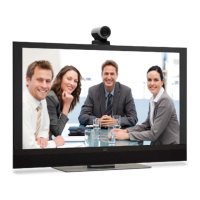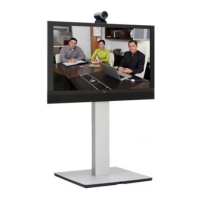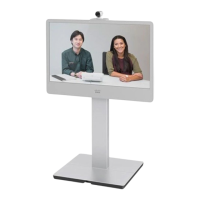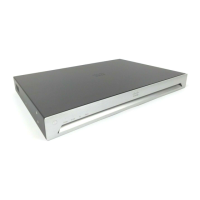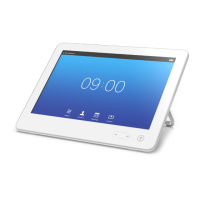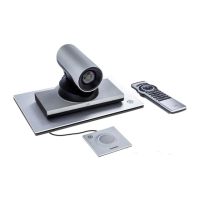D15119.02 MX700 and MX800 Administrator Guide TC7.2, AUGUST 2014. www.cisco.com — Copyright © 2014 Cisco Systems, Inc. All rights reserved.
92
Cisco TelePresence MX700 and MX800 Administrator Guide
Provisioning settings
Provisioning Connectivity
This setting controls how the device discovers whether it should request an internal or external
configuration from the provisioning server.
Requires user role: ADMIN
Value space: <Internal/External/Auto>
Internal: Request internal configuration.
External: Request external configuration.
Auto: Automatically discover using NAPTR queries whether internal or external configurations
should be requested. If the NAPTR responses have the "e" flag, external configurations will
be requested. Otherwise internal configurations will be requested.
Example:
Provisioning Connectivity: Auto
Provisioning Mode
It is possible to configure a video system using a provisioning system (external manager).
This allows video conferencing network administrators to manage many video systems
simultaneously. With this setting you choose which type of provisioning system to use.
Provisioning can also be switched off. Contact your provisioning system provider/representative
for more information.
Requires user role: ADMIN
Value space: <Off/TMS/VCS/CallWay/CUCM/Auto/Edge>
Off: The video system will not be configured by a provisioning system.
Auto: The provisioning server will automatically be selected by the video system.
TMS: The video system will be configured using TMS (Cisco TelePresence Management
System).
VCS: The video system will be configured using VCS (Cisco TelePresence Video
Communication Server).
Callway: The video system will be configured using the WebEx TelePresence subscription
service (formerly named Callway).
CUCM: The video system will be configured using CUCM (Cisco Unified Communications
Manager).
Edge: The system will connect to CUCM via the Collaboration Edge infrastructure.
Example:
Provisioning Mode: Auto
Provisioning LoginName
This is the user name part of the credentials used to authenticate the video system with the
provisioning server. This setting must be used when required by the provisioning server. If
Provisioning Mode is Callway (WebEx TelePresence), enter the video number.
Requires user role: ADMIN
Value space: <S: 0, 80>
Format: String with a maximum of 80 characters.
Example:
Provisioning LoginName: ""
Provisioning Password
This is the password part of the credentials used to authenticate the video system with the
provisioning server. This setting must be used when required by the provisioning server. If
Provisioning Mode is Callway (WebEx TelePresence), enter the activation code.
Requires user role: ADMIN
Value space: <S: 0, 64>
Format: String with a maximum of 64 characters.
Example:
Provisioning Password: ""
Provisioning HttpMethod
Select the HTTP method to be used for the provisioning.
Requires user role: ADMIN
Value space: <G E T/ P OST>
GE T: Select GET when the provisioning server supports GET.
POST: Select POST when the provisioning server supports POST.
Example:
Provisioning HttpMethod: POST
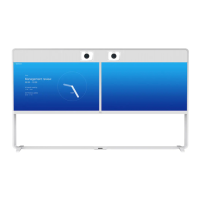
